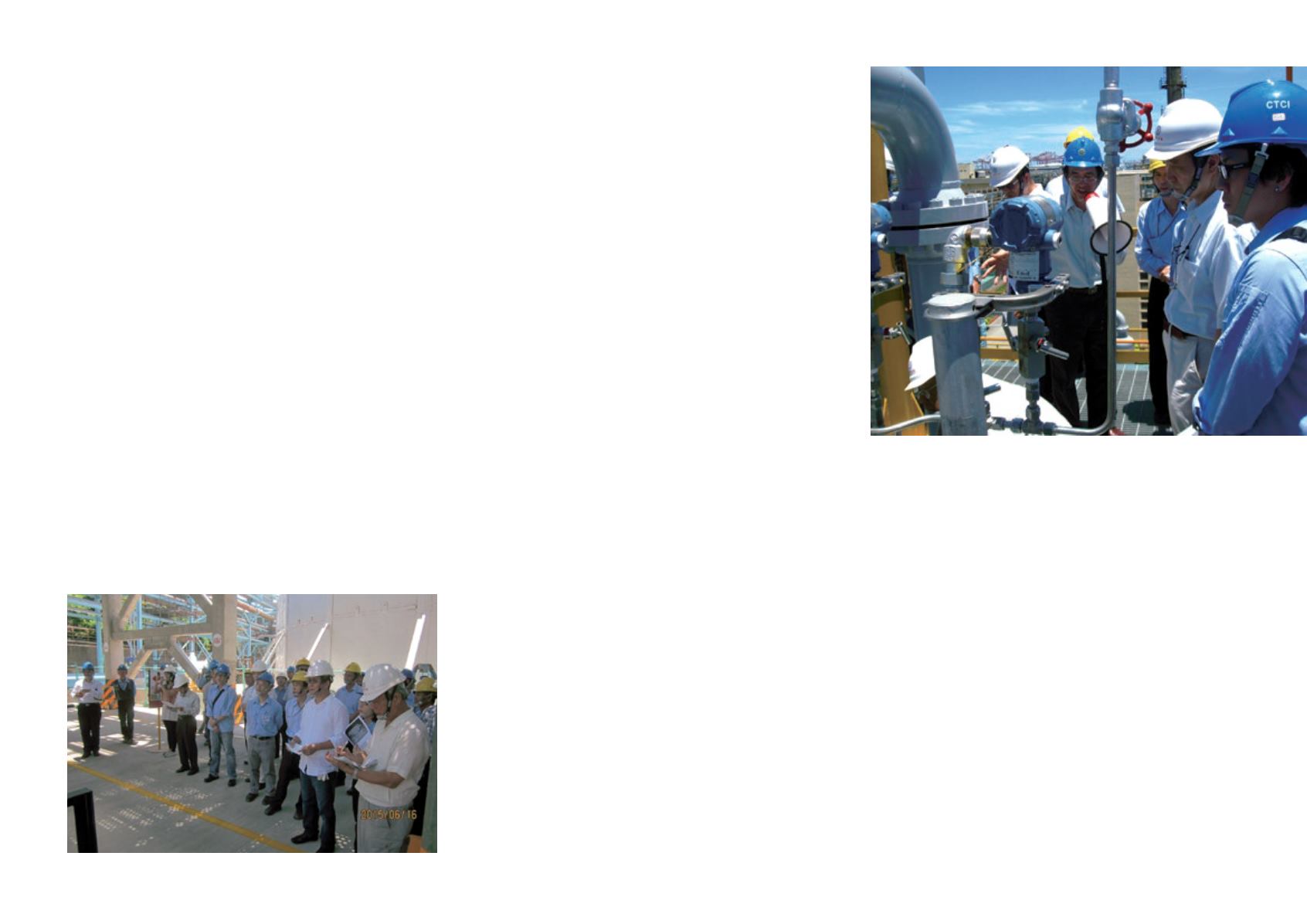
CH. 4 Professional Engineering Service
70
Equipment and Efficiency Performance of the Project
The FGRS Project is located in Area C and F in Talin Plant.
Two separate recycling systems were designed, namely the
Talin No. 2&3 flares shared-set, and the No. 4&5 flares. The
processing volume of each system is designed to be 9,600
Nm3/hour. To ensure sustainable operations, a redundancy
system was put in place. When the equipment on one stream
(for example, a pressure vessel) is under inspection or
repair, the other stream can keep recycling waste gases.The
operation of the system is not affected by shutting down of
the equipment.
In terms of the project’s energy conservation efficiency,
four three-stage high-efficiency pumps and four two-stage
pumps were used. Highly efficient pumps are activated
according to the amount of waste gases, which saves around
NT$630 million worth of electricity each year. As for the
design of the cooling water system, there is 13 degrees of
temperature difference (compared to 5 degrees previously),
conserving 86,100tons of water per year and saving NT$1.72
billion on water per year.The estimated total amount of
conservation is around NT$2.35 billion per year.
Furthermore, the most important part of the project is the
reduction of waste gas, which can normally reach 17,520
KNm3/year.After recycling and reuse, an estimated 92,449
tons of carbon dioxide emissionsare reduced per year,
contributing significantly to the protection of the environment.
Using Innovative Technologies and Engineering
Methods
The original purpose of constructing the Talin FGRS plant
was to enhance environmental protection through CTCI’s
system design and engineering capabilities that integrate the
project’s requirements with green engineering. In addition,
throughout each step of the production process, CTCI insisted
on recycling and reusing wasted materials discharged
from the plant to their fullest. As for materials that can no
longer be recycled or reused, we adopted proper treatment
method, hoping to attain the goal of minimizing pollution and
environmental impact.
CTCI was responsible for many aspects of the FGRS
Project, including: outlining the methods and processes;
project planning; basic designing; detailed designing (civil
and structural engineering, piping, equipment, instrument and
control systems, power systems and inspection, firefighting,
fire proofing and painting etc.); materials and equipment
purchasing and installation; project and construction
management; preparing and assisting with the test run;
assisting commission testing; maintenance and operation
training; documentation handover and warranties, and
much more. The contract schedule for each area was 485
calendar days. Good co-ordination and integration lead to the
completion of project in time. In order to reach completion
and maintain effective budget controls, it was necessary to
have a well drawn-out overall plan at the outset with stages
and progress checks along the way.
It is worth mentioning that while CTCI was in the process of
engineering design, it had committed its engineering design
group to independently develop innovative engineering
methods, some of which are in the process of patent
application.Without exaggeration, it is fair to say that the FGRS
Project was CTCI’s masterpiece of the year!
One innovation and four optimized new engineering
technologies used in the project are detailed below:
Innovation 1 : First Application of Break Drum to
Waste Gas in the FGRS System
As an innovator in the industry, CTCI has had experience
with adding break drum in the upstream of the flare-recovery


